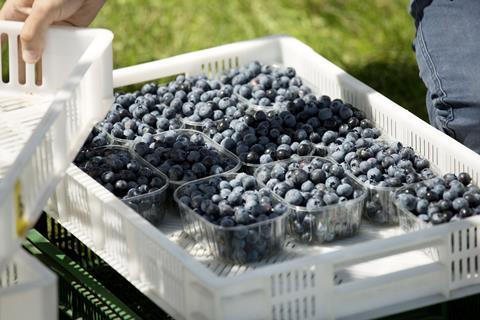Entry of Polish imports set to boost competition and help feed burgeoning consumer demand for blueberries
Polish blueberries are set to enter the Vietnamese market for the first time after the Ministry of Trade granted official access to the fruit, according to the Vietnam Trade Office (VTO) in Poland.

Vietnam’s Ministry of Agriculture and Environment (MAE) officially informed the Polish Plant Health and Seed Inspection Service (PIORiN) that Polish blueberries were permitted for export to Vietnam on 16 September. The new protocol was confirmed after a delegation from MAE visited Poland to inspect blueberry plantations and packing facilities in August.
Under Vietnam’s plant quarantine regulations, all orchards and packhouses must be pre-registered with PIORiN, and they are subject to continuous phytosanitary supervision. Registered orchards and packhouses must comply with specific requirements established in 2024, including control procedures, hygiene standards, and pest protection measures.
The VTO noted that blueberries are gaining popularity in Vietnam due to their distinctive flavour and nutritional benefits. However, limited supply and high transportation costs mean fresh blueberries are currently priced between VND1 and VND1.5m per kg (around US$40-60), making them unaffordable to the majority of consumers, it said. The entry of Polish blueberries is set to increase competition and expand supply options, making the fruit more accessible to consumers.
Dominika Kozarzewska of leading Polish berry supplier Polskie Jagody welcomed the opening of the Vietnam market.
“In my view, this marks another significant step in diversifying Poland’s export markets, following the recent opening of the Indian market,” she told Fruitnet. “As Europe’s leading blueberry producer currently transitioning toward higher-quality fruit – largely through the replacement of older varieties – Poland is well positioned to achieve promising results in these new markets.”
Hai Nguyen, CEO of leading high-end fruit retailer, Klever Fruit, told Fruitnet he was cautiously optimistic about the market prospects for Polish blueberries.
“The main season for Polish blueberries is from June to August, so I don’t think they will compete with Southern Hemisphere supplying nations such as Peru whose season runs from November to March,” said Nguyen.
“We will apply for an import permit for the fruit next week and we’ll find out the details of the protocol then.”
Poland has seen ongoing growth in both blueberry acreage and production over the past seven years.
Between 2020 and 2021, the country’s planted area expanded by 25 per cent. While this pace has slowed recently, growers are increasingly focusing on replacing older varieties, instead of establishing new plantations.
In 2024, the total planted area reached nearly 13,000ha – an increase of just 2.6 per cent compared to 2023 – while varietal renewal gained significant traction. The 2024 harvest matched that of 2023, totalling around 62,000 tonnes.
According to Agronometrics, exports in 2024 exceeded the previous year’s by 17 per cent, reaching nearly 26,000 tonnes.



